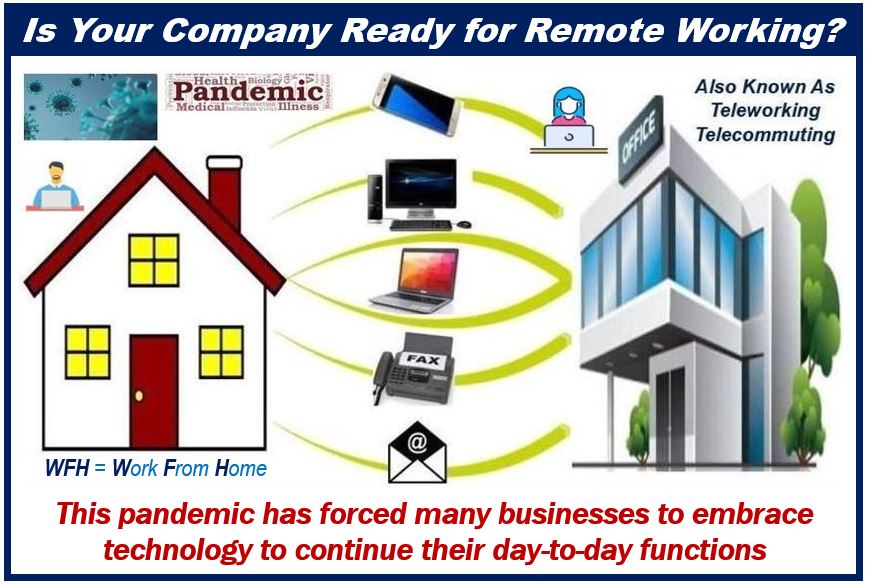More than one year into lockdowns, social distancing, and remote workforces, the days of speculation about the so-called “New Normal” or “Next Normal” are in our rearview mirror.
Given the overwhelming business reliance on technology, managed services providers worked in the trenches helping companies leverage innovative technologies to survive. Experts in the IT sector gained a first-hand perspective.

“We are a year into this pandemic, and it’s certain many things will never be the same. This pandemic has forced many companies to embrace technology to continue their day-to-day functions,” Joe Cannata, of Techsperts, reportedly said.
In July 2020, a Gartner study indicated that 82 percent of decision-makers planned to keep some form of remote workforce in place. A more recent survey points to 25 percent of U.S. workers remaining in remote positions. While both statistics seem impressive, they don’t deliver hard, consistent data. Needless to say, 82 percent and 25 percent are worlds apart. But professionals in the IT industry offer informed thought leadership.
“Employers must now realize that if they were able to sustain their business under the new circumstances for over a year, a new precedent has been set,” Ian Hansen, of Philantech3, reportedly said. “Ironically, these outcomes result from something that would never have otherwise been attempted. Out of necessity, they were required to shift due to the pandemic.”
As the pandemic persists, frontline IT professionals continue to work diligently with wide-reaching businesses. Their sometimes differing experiences serve as a boots-on-the-ground measure of what business leaders should anticipate.
Technology-Shy Employees Ran Out Of Excuses
The number of people working from home reportedly increased by 140 percent from 2005-2020. Much of that growth can be attributed to technological advancements and industry leaders’ willingness to embrace them.
“The technologies we’re using today have been around for years. Tools like Zoom and Cloud-based file sharing aren’t new. But the pandemic has forced adoption at a pace those of us in the tech world could not have expected,” Paul Bush, principal consultant at OneSource Technology, reportedly said. “In fact, one CEO told me that it’s been ‘eye-opening’ for him.”
By contrast, a cross-section of the population remains skittish about remote capabilities. Forced to transition to off-site productivity, the pandemic effectively pulled the plug on fear-driven excuses.
“The employers that insisted on having staff in the office because ‘we were not ready’ for remote work can no longer say that,” Ilan Sredni, president of Palindrome Consulting, reportedly said. “The squeaky wheel employees who always complained at that the office can no longer complain working from home. They will have their supervisors acknowledging that they tend to complain to not get work done.”
Mike Shelah of Advantage Industries agrees that the pandemic nudged hesitant businesses to adopt remote infrastructure.
“The Covid impact has two sweeping changes to the work world. First, many companies that believed “remote work” was not a viable business option have been proven wrong. While this model does not work for every person — or every company — it is a much more successful model that many anticipated,” Shelah reportedly said. “
Individual Companies Need To Adopt Hybrid Strategies
Towards the end of 2020, a media narrative trended away from hard predictions about remote workforces coming of age as a New Normal. The notion of hybrid commitments took its place. Several IT professionals recognize that certain types of businesses rely on a degree of in-person interactions.
“I feel there will be a disconnect between the company and employee, especially when the remote time is greater. Not to mention the impact to people’s social interaction,” Ian Brady, of Steadfast Solutions, reportedly said. “Like anything, the answer generally sits in the middle.”
Technijian’s Ravi Jain gained valuable experience with organizations that transitioned. He places a high value on human interactions and also leans toward hybrid solutions.
“I believe the pandemic has shown that remote work can be as productive as office work when done short term,” Jain reportedly said. “The need to interact with co-workers in person, to have a break or lunch with them is priceless.”
Jorge Rogas, a partner at Tektonic Inc., indicates that remote workforces are not a one-size-fits-all solution. He acknowledges that remote workforces are now woven into the fabric of business practices. But the pandemic forced businesses to change abruptly. Not having time to transition employees has resulted in mixed results.
“Many of our clients are now in the process of moving to a more Cloud-based environment and are not planning to renew their office leases,” Rojas reportedly said. “Working remotely has created other issues. Some people are just not cut out for it.”
Some Managed IT Experts Envision Remote Permanence
The benefits that specific sectors gained from remote workforces earned enough trust and profitability to become a permanent part of the business landscape. Managed IT professionals who spearheaded their transition don’t see industry leaders stepping backward.
“The 9-5 workday is dead. Honestly, 9-5 has been on life support for a few years with the rapid advances in video conferencing and collaboration technologies like Microsoft Teams, and this pandemic is what finally pulled the plug,” Demetrius Cassidy of In The Cloud Technologies reportedly said. “The biggest take is that with more employers enabling work-from-home benefits, the competitive landscape for talent is changing. If your company does not adapt to today’s demand for a remote workforce, your competitors will end up grabbing your best talent.”
Interesting related article: “What is Teleworking?“

